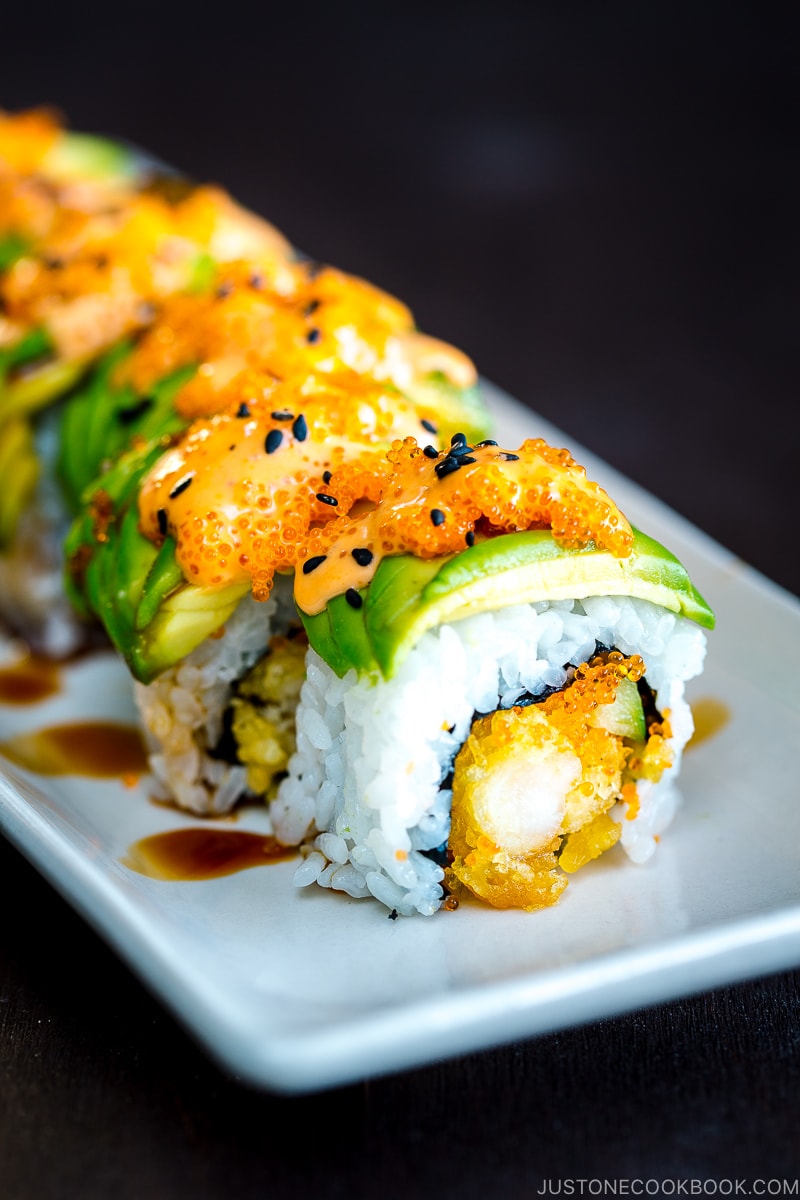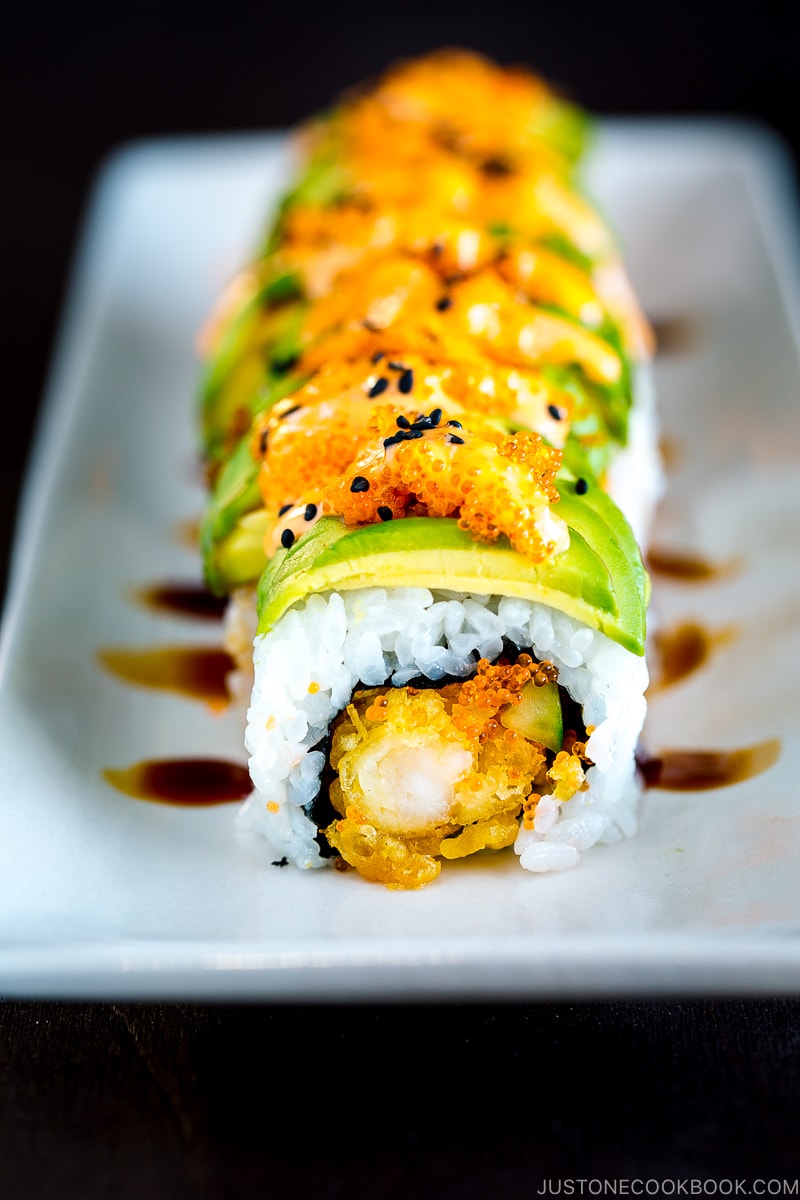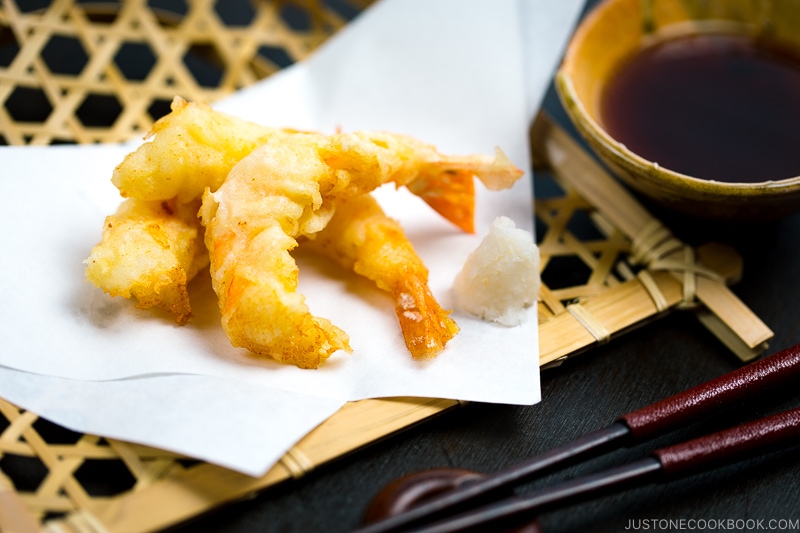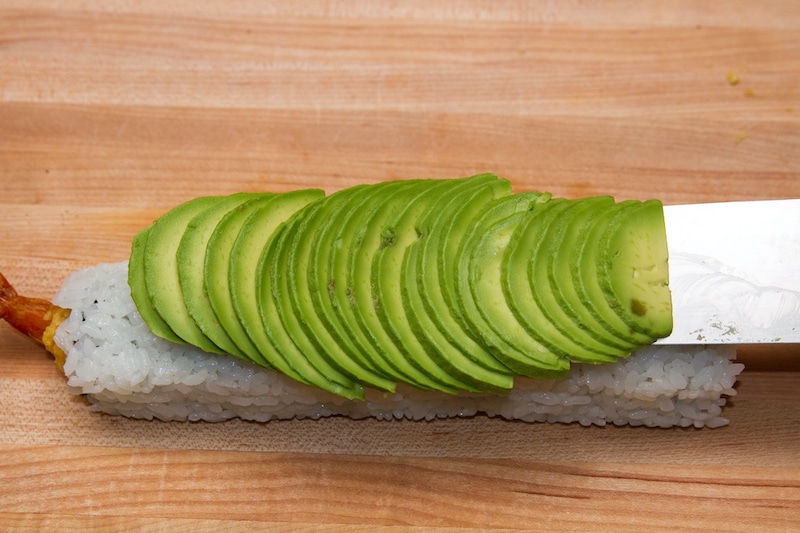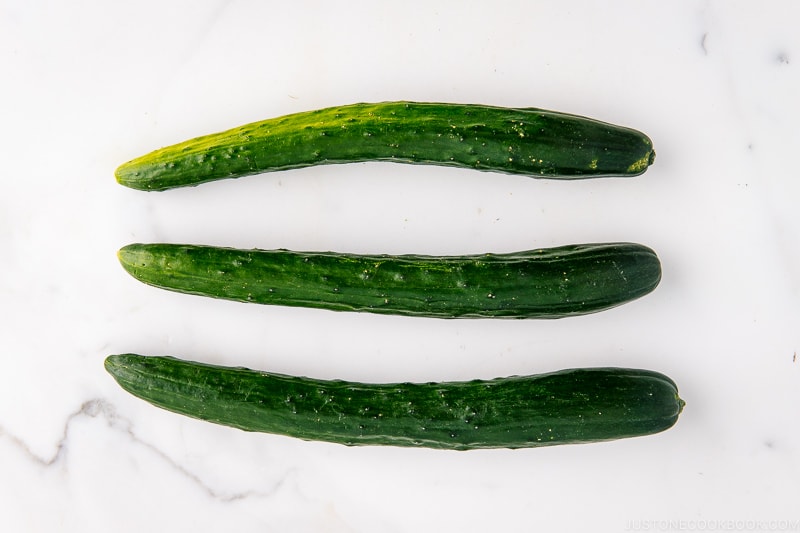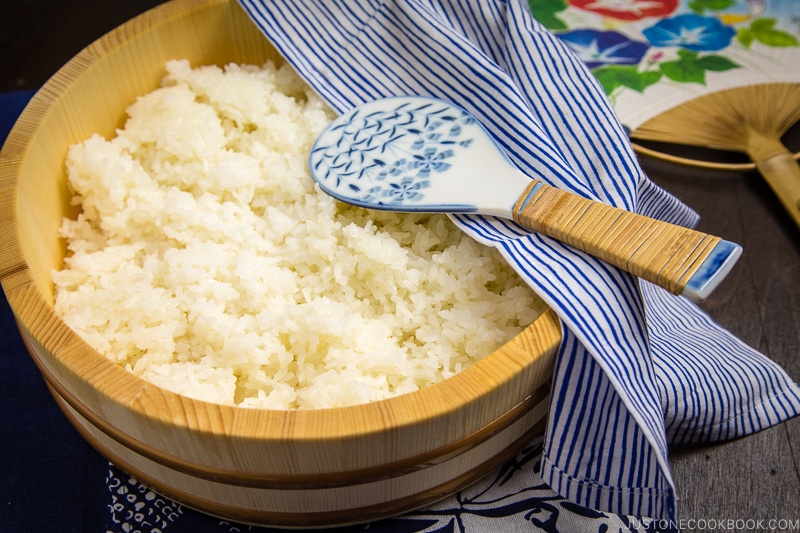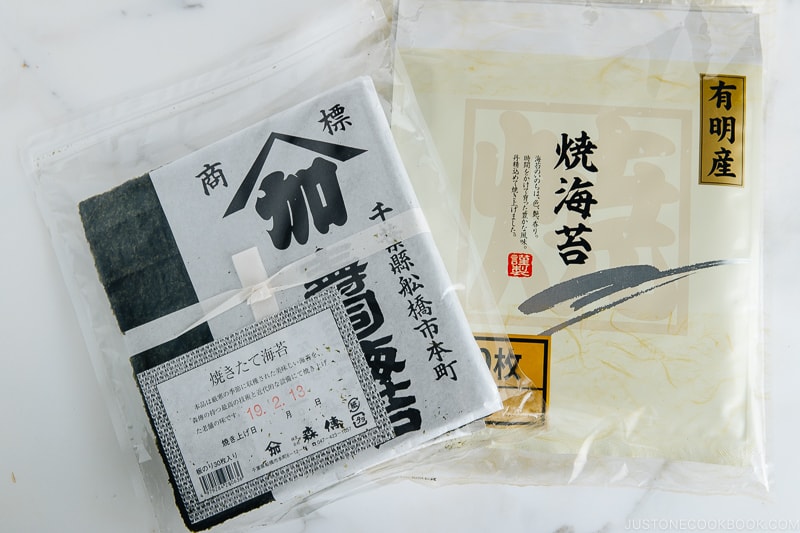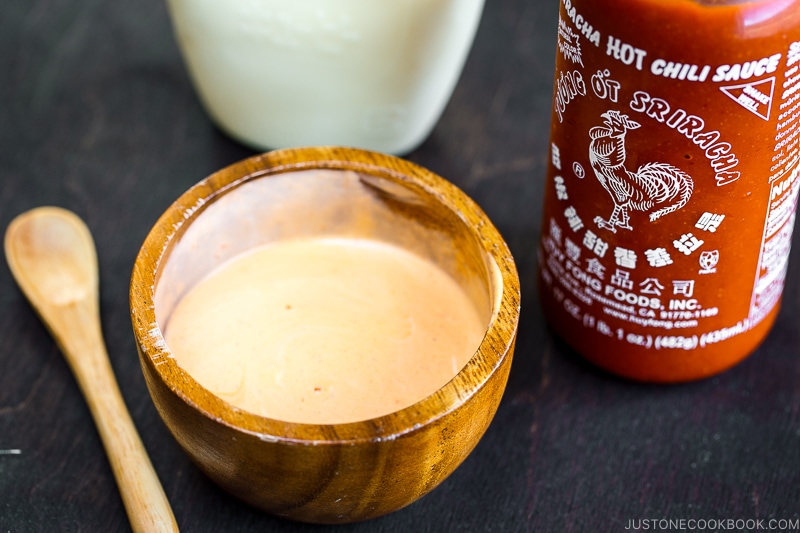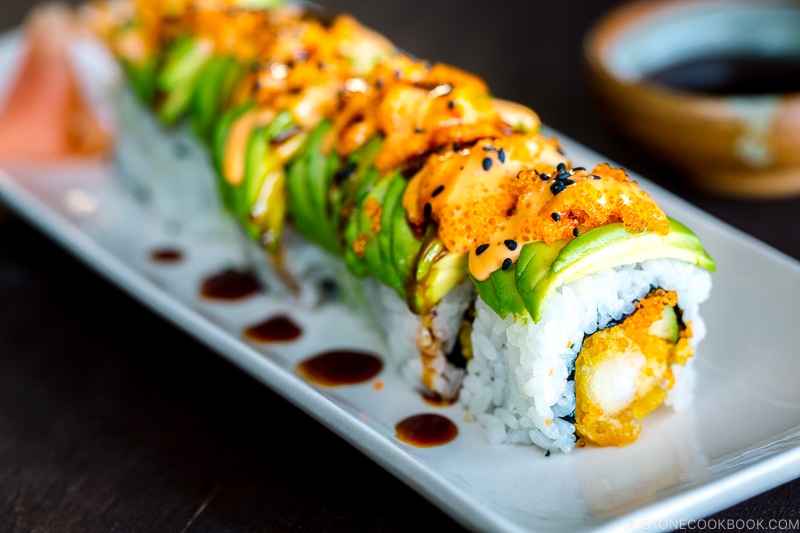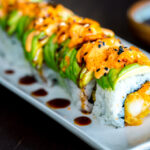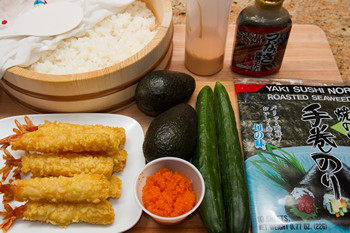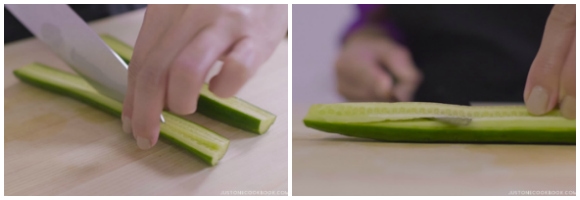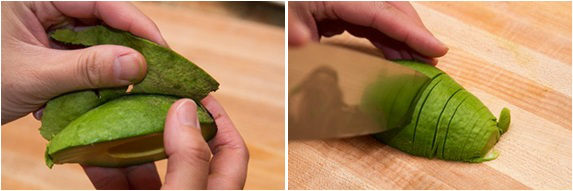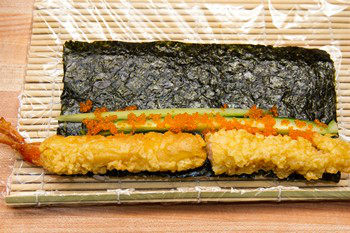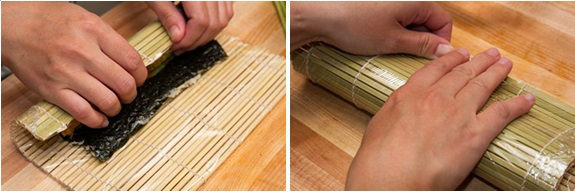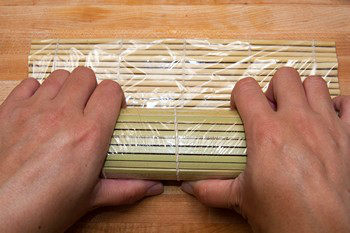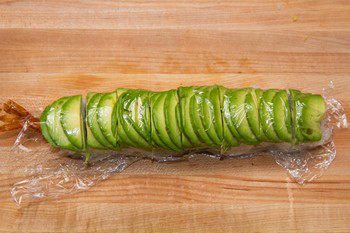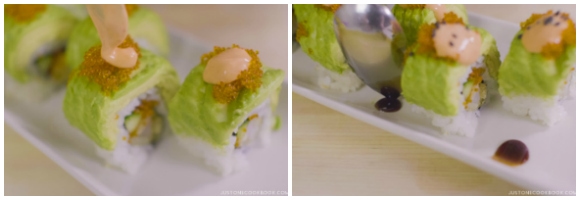Next to California Rolls, Dragon Roll is another popular sushi roll served at American-style sushi restaurants and buffet joints. It’s not traditional sushi you can find in Japan, but I can see why this imaginative sushi is such a favorite. The combo of creamy avocado and crunchy shrimp tempura make the perfect match to the tenderly moist vinegared rice. It’s so delicious that I can devour the entire roll on my own. Luckily, making dragon roll at home is easier than it looks.
What is Dragon Roll
The dragon roll is an inside-out sushi, which is filled with nori sheet wrapping around the ingredients on the inside and the sushi rice is on the outside. Here, shrimp tempura and cucumber are tucked inside the nori, and thinly sliced avocado is layered on top of the roll, and when it’s sliced, the artistically arranged sushi resembles the scales of a dragon. The sushi roll is typically topped with tobiko fish roes and drizzled with spicy mayonnaise and unagi sauce, which makes it even more enticing. You can also find another version of the dragon roll that features grilled eel (unagi) instead of shrimp tempura.
Key Ingredients and Tips to Make Perfect Dragon Roll
1. Shrimp Tempura
Since shrimp tempura is getting mainstream, many American grocery stores (Trader Joe’s, Costco, etc) carry frozen shrimp tempura at the seafood section. The frozen shrimp tempura tends to be extra crunchy, so it’s perfect for making dragon roll at home. You just need to pop them in an oven (or toaster oven) for 20 minutes or so, while you do most of the prep work. Of course, you can make them from scratch, and here’s my Shrimp Tempura recipe. You’ll need 2 shrimp tempuras for each roll you plan to make.
2. Avocado
It’s funny to say this, but I find the most challenging part of making dragon roll at home is to find the perfectly ripe avocado. To choose the perfect avocado for immediate use, look for the ones with darker-colored skin. Then gently squeeze the fruit in the palm of your hand. The avocado is ready to eat if it yields to firm, gentle pressure. If the avocado does not yield to gentle pressure, it is considered still “firm” and will ripen in a couple of days. If the avocado feels mushy or very soft to the touch it may be very ripe to overripe.
3. Cucumber
I use Japanese cucumbers which are long and slender. They have few seeds so it’s perfect for sushi rolls. If you can’t find Japanese cucumbers, then use Persian cucumbers are quite similar so they are a great substitute. If you use English cucumbers, then cut in half lengthwise and remove the seeds with a spoon as they yield too much water inside the rolls. I do not recommend using typical American cucumbers as they have waxy thick skin and too many seeds inside.
4. Sushi Rice
The word “sushi rice” is sometimes used to refer to Japanese short-grain rice outside of Japan, but in Japanese cooking, Sushi Rice (酢飯) means steamed rice that has been seasoned with sushi vinegar and only used for all types of sushi recipes. Perfectly prepared sushi rice is very important in sushi making. Here are a few things to take note:
You’ll need Japanese short-grain rice (I use Koshihikari), cook it well, and season with sushi vinegar. Read my step-by-step tutorial on how to cook sushi rice. Please DO NOT mash the sushi rice when you place it on the nori sheet. You should be able to see individual rice kernel, not mushy rice in the roll. Do not overfill the roll with rice. It’s important to balance to ratio of rice and the fillings. My quick tip is to use a ½-cup measuring cup to fill the rice before you assemble your rolls. That should be enough for half a sheet of nori. With a consistent amount of sushi rice for each roll, all of your sushi rolls will be of even size!
5. Nori (Seaweed)
I use only half a sheet of nori for my recipe and it is sufficient to roll. If you found the nori a little too short, cut down the filling slightly. Keep practicing and you should be able to find the perfect ratio for rolling.
6. Spicy Mayo
7. Unagi Sauce
Just a few spoonfuls of unagi sauce give an extra flavorful boost to the dragon roll. If you can’t find a bottle of unagi (eel) sauce from your local Japanese grocery store, try my Homemade Unagi Sauce recipe. It is totally worth making from scratch, especially if you love making Unadon (Unagi Donburi) or Yaki Onigiri. It’s a good condiment to have in your fridge at all times.
Dragon Roll for Sushi Party
I hope I’ve inspired you to start making sushi rolls at home. Dragon roll does not include any raw sashimi, so it’s safe for pregnant ladies and young children. If you’re looking for sushi to serve a crowd, this is the one to make. We have an ultimate guide on how to host a sushi party that you might want to check out!
Where to Buy a Sushi Making Kit
Other Sushi Recipes You’ll Love
California Roll Spicy Tuna Roll Futomaki (Fat Sushi Roll) Hosomaki (Thin Sushi Roll) Hand Roll Temari Sushi Inari Sushi Cucumber Wrapped Sushi Sushi Ginger (gari)
Wish to learn more about Japanese cooking? Sign up for our free newsletter to receive cooking tips & recipe updates! And stay in touch with me on Facebook, Pinterest, YouTube, and Instagram. Editor’s Note: Original post was published in June 2013. The post is updated with new content and video in April 2016 and republished in June 2020.
